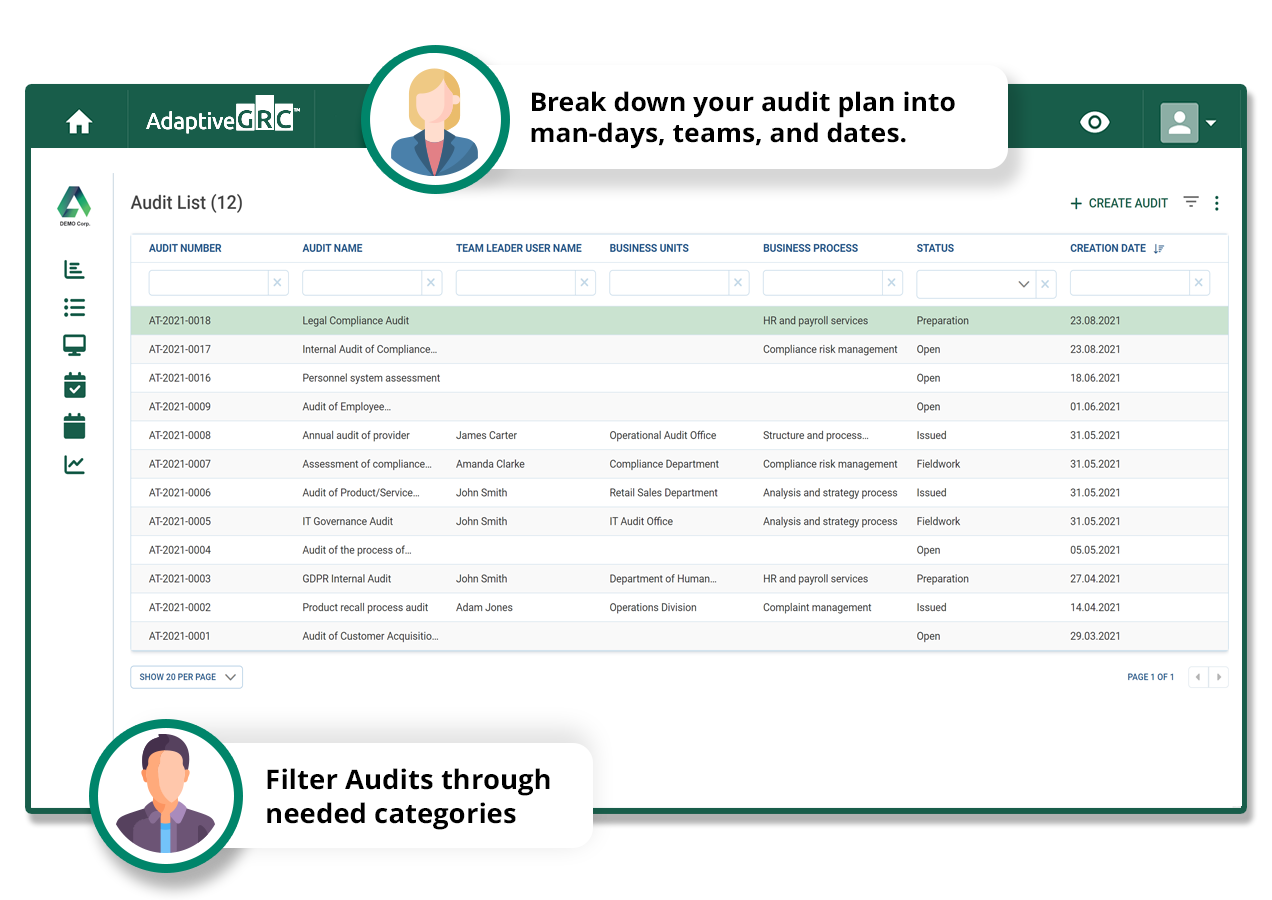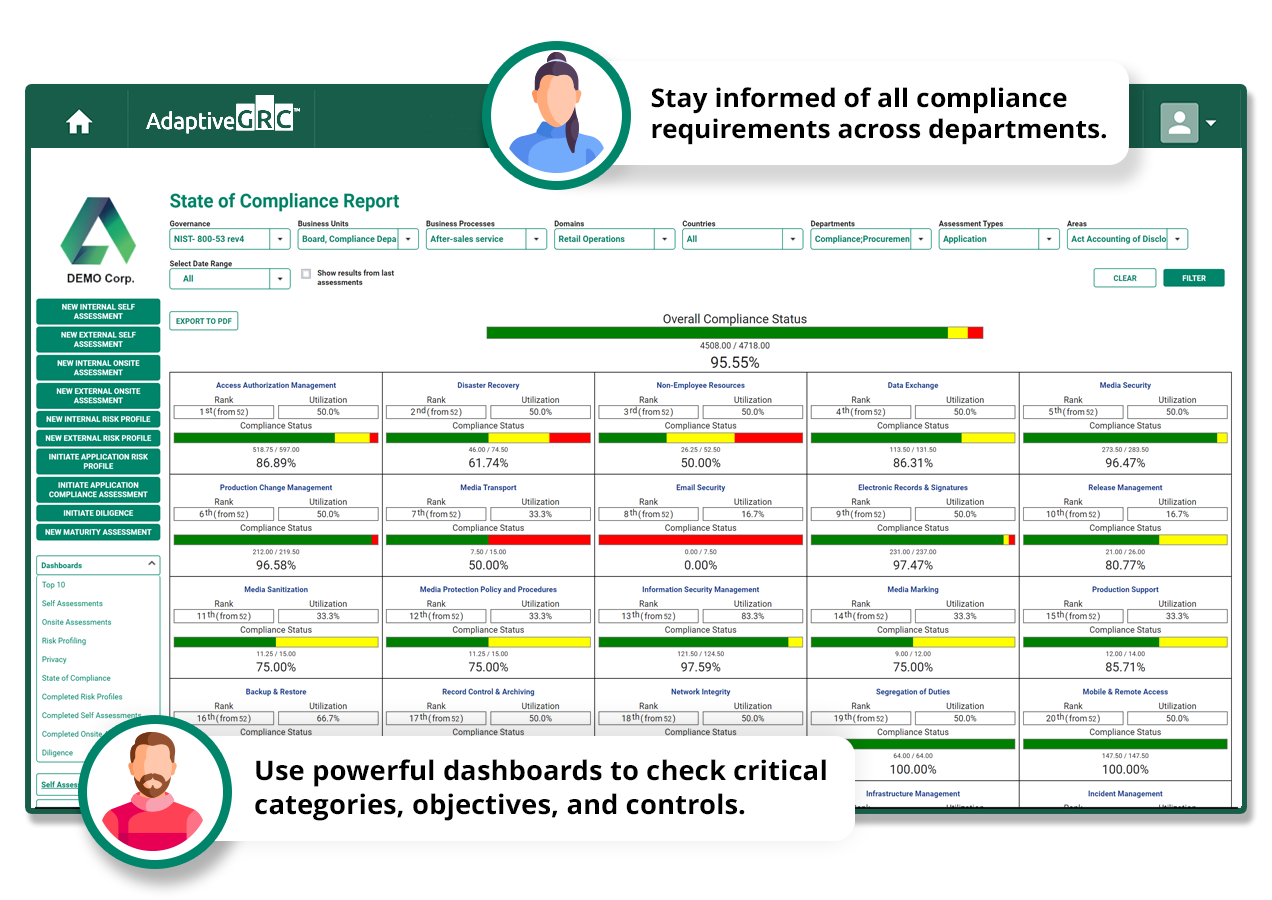Organizations operating in regulated industries often find audits to be tedious and inefficient. To address this, we developed the AdaptiveGRC Internal Audit module. This solution streamlines audit processes by automating routine tasks, consolidating all procedures, reports, and findings into a single source of truth, and strengthening defenses against emerging risks. If you’re still managing audits through spreadsheets and manual workflows, let’s connect and explore how we can support you.
What's unique about AdaptiveGRC
Streamline risk and compliance efforts for all levels of management, directors and CEOs via a platform which is intuitive, fully customizable and live in real-time. Reduce the time spent on risk and compliance activities by following a customized automated workflow.
DORA, NIS2 compliant
Full coordination of GRC activities
Tailored to your needs
User-friendly interface
An absolutely scalable platform
Comprehensive reporting features
Internal audit

Risk management
AdaptiveGRC Risk Management Suite empowers organizations to align their risk practices with leading standards like ISO 31000. It enables you to define, monitor, and manage risk treatments, controls, and corrective actions, all while providing clear, customizable visualizations. Our dynamic dashboards and heatmaps offer an intuitive view of over 12 risk dimensions, tailored to match your organization’s specific profile.

Compliance
Effective compliance management is crucial for mitigating risks and maintaining operational integrity. With AdaptiveGRC Compliance Suite, you can automate the entire compliance lifecycle: from tracking performance across departments, suppliers, and IT systems to conducting self-assessments, on-site audits, and reporting incidents that affect your compliance status. Turn regulatory challenges into strategic advantages with a smarter, automated approach.

Internal control
AdaptiveGRC Internal Control Suite centralizes all your internal control processes into a unified platform. By offering a comprehensive overview, it simplifies monitoring, highlights gaps that require action, and improves resource allocation. This centralized environment not only strengthens your control framework but also enhances your ability to meet regulatory demands efficiently.

Having implemented Adaptive GRC our customers note:
Increased operational efficiency in the GRC area by 90%
Reduced operating costs of systems by 51%
Improved communication efficiency between units by 34%
Streamlined the compliance process with recommendations by 29%
One solution for all GRC challenges
Adaptive GRC is a tool created by auditors for auditors. It's an Internal Audit Suite that allows to fully coordinate, monitor, and measure governance, risk, and compliance processes and information. The solution can be adjusted to the size of an organization and quickly and easily integrated into the internal company systems.
Make an enquiryLet's talk about a solution
Our engineers, top specialists, and consultants will help you discover solutions tailored to your business. From simple support to complex digital transformation operations – we help you do more.







